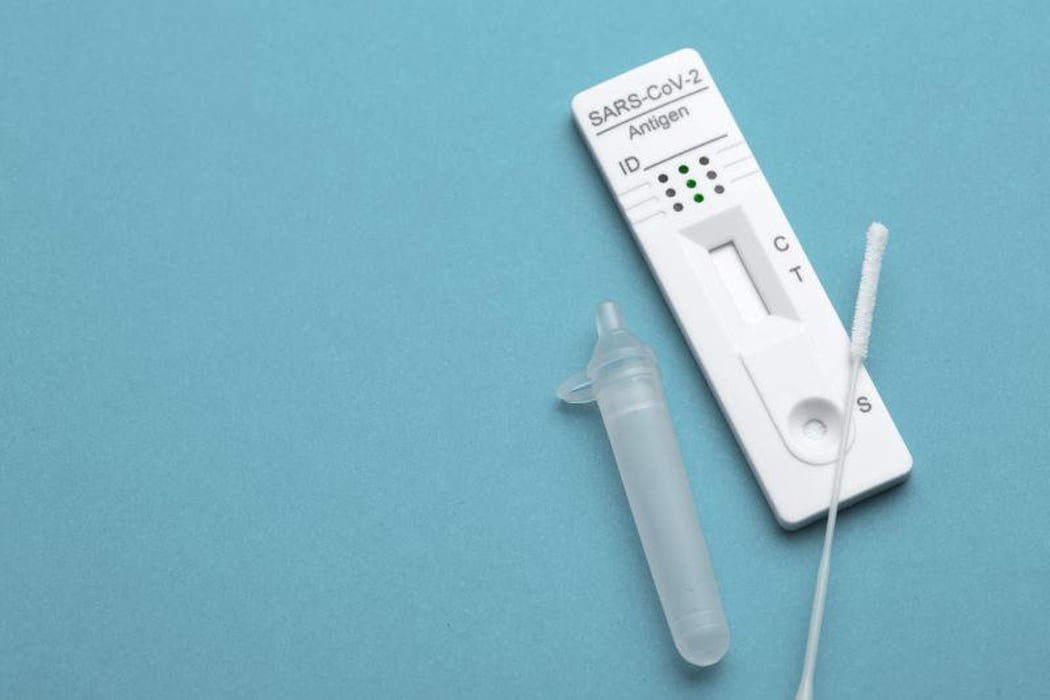Could Your Genes Guard You From the Symptoms of COVID Infection?

WEDNESDAY, July 19, 2023 (HealthDay News) -- In the world of COVID-19 infections, the majority of patients develop symptoms, while about one-fifth mysteriously don’t develop a cough, sore throat or other tell-tale signs of illness.
Now, new research finds that these symptom-free super-dodgers are more than twice as likely as others to carry a genetic mutation that seems to obliterate COVID-19.
“The mutation is a version of a gene called HLA-B,” said study co-author Jill Hollenbach, a professor in the departments of neurology and epidemiology and biostatistics at University of California, San Francisco.
This discovery could have far-reaching implications, perhaps influencing future vaccine design.
“We think that this observation can help inform next generation vaccine design,” said Hollenbach, “and help us to understand how to prevent symptoms even when people do become infected.”
HLA stands for human leukocyte antigen. In general, said Hollenbach, an HLA gene’s job is to alert your natural defenses to a potential health threat and trigger a response.
But HLA genes can come in all shapes and sizes, she added, with about 10% of the general public carrying a specific mutation that scientists call HLA-B*15:01.
When it comes to COVID-19 symptoms, that particular mutation is critical, Hollenbach and her colleagues found. By activating key immune (T) cells when an infection happens, the mutation effectively rids the patient of the COVID infection, before noticeable symptoms develop. Not even a runny nose.
The investigators determined that about one-fifth of all asymptomatic super-dodgers carry at least one copy of the anti-COVID HLA mutation — double the percentage found among symptomatic patients.
To explore a potential connection between that mutation and symptom-free COVID-19, the study team zeroed in on just over 1,400 men and women, all white, who tested positive for COVID-19 before a vaccine was widely available.
All were also participants in a bone marrow registry, which meant that they had been typed for precisely which genetic variations of HLA they carried.
Among the COVID-19 patients, 136 had no symptoms a minimum of two weeks prior to testing positive, and two weeks after.
About 20% of these symptom-free patients were found to carry at least a single copy of the HLA mutation that appears to protect against COVID symptoms. Some patients carried two copies of the protective HLA gene, and they were more than eight times less likely to get sick from COVID-19, compared with patients who didn’t carry the mutation at all.
Digging deeper, the team discovered that T cells in patients with the protective HLA mutation appeared reactive to pieces of protein found in the COVID-19 virus.
In turn, those protein fragments were determined to have certain genetic sequences in common with other seasonal cold viruses.
The upshot: Patients who had the HLA mutation in question also had a form of pre-existing immunity to the COVID-19 virus that enabled them to expunge it before symptoms arose.
Dr. Davey Smith is head of the University of California, San Diego (UCSD), division of infectious diseases and global public health. He is also vice chair of research with the UCSD department of medicine.
Though not involved in the study, Smith said that while prior studies have looked into the HLA-COVID connection, the current effort “is the most robust study I have seen looking at HLA types.”
“I think this solves a mystery that we observed during the pandemic,” he noted, adding that patients who happen to have the mutation have essentially “won the genetic lottery for COVID.”
But, Smith said, “The real importance is increasing our understanding for how HLA recognizes important viral proteins, which can help us make better vaccines. I could imagine a world where our genetics — like HLA types — determine what vaccines we should receive to best train our immune system.”
The findings were published online July 19 in the journal Nature.
More information
There's more on symptomatic and asymptomatic COVID-19 at the World Health Organization.
SOURCES: Jill A. Hollenbach, PhD, MPH, professor, departments of neurology and epidemiology and biostatistics, University of California, San Francisco; Davey M. Smith, MD, MAS, head, infectious diseases and global public health division, and professor and vice chair of research, department of medicine, University of California, San Diego; Nature, July 19, 2023
Related Posts
High Ultraprocessed Food Intake Tied to Greater Mortality
TUESDAY, Sept. 6, 2022 (HealthDay News) -- Diets high in ultraprocessed food...
Mujer resistente al Alzheimer inspira una nueva manera de combatir la enfermedad
MIÉRCOLES, 11 de octubre de 2023 (HealthDay News) -- Los investigadores han...
Guideline Updated for Management of Spontaneous ICH
TUESDAY, May 17, 2022 (HealthDay News) -- In an updated guideline issued by the...
AHA News: With a Little Luck, These Foods Will Get Your New Year Started Right
WEDNESDAY, Dec. 21, 2022 (American Heart Association News) -- Need a healthy way...
